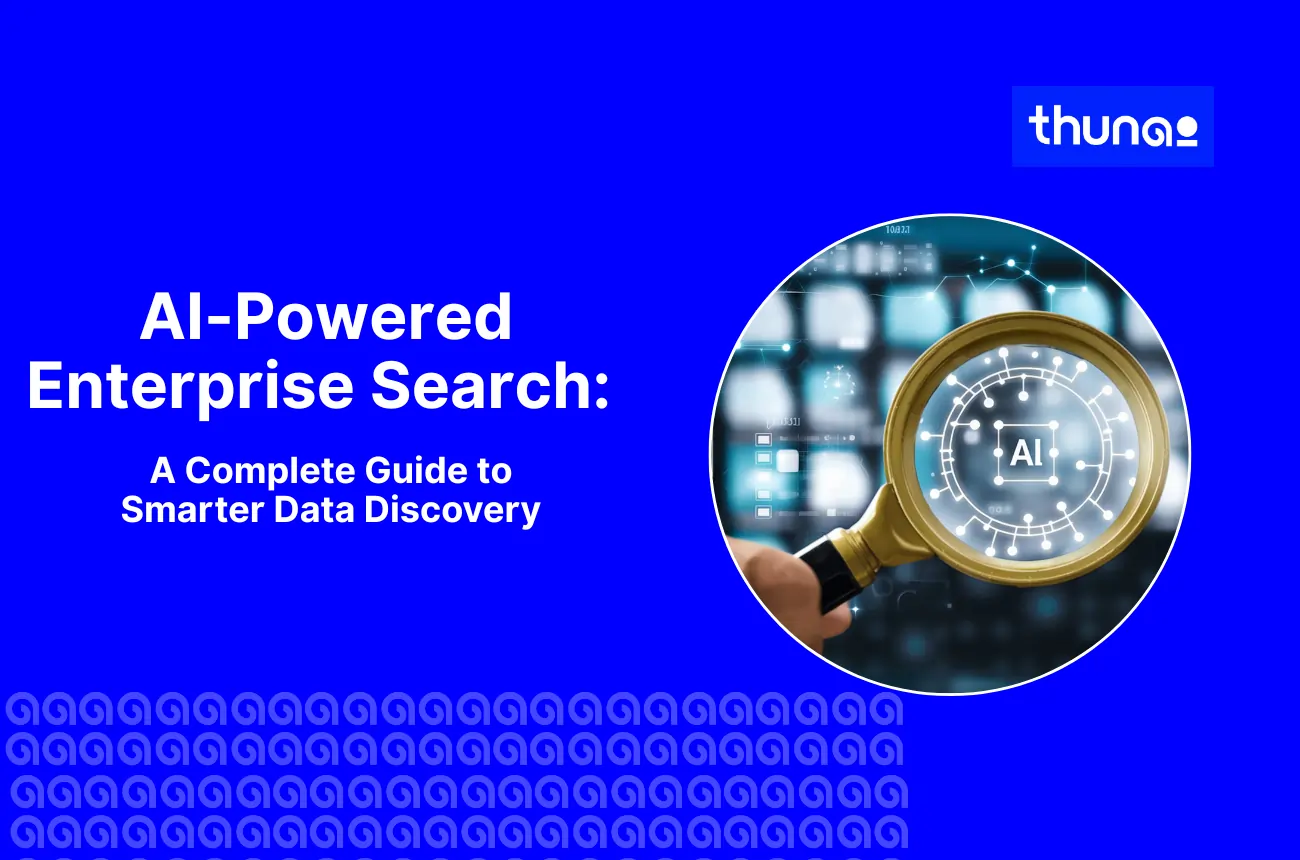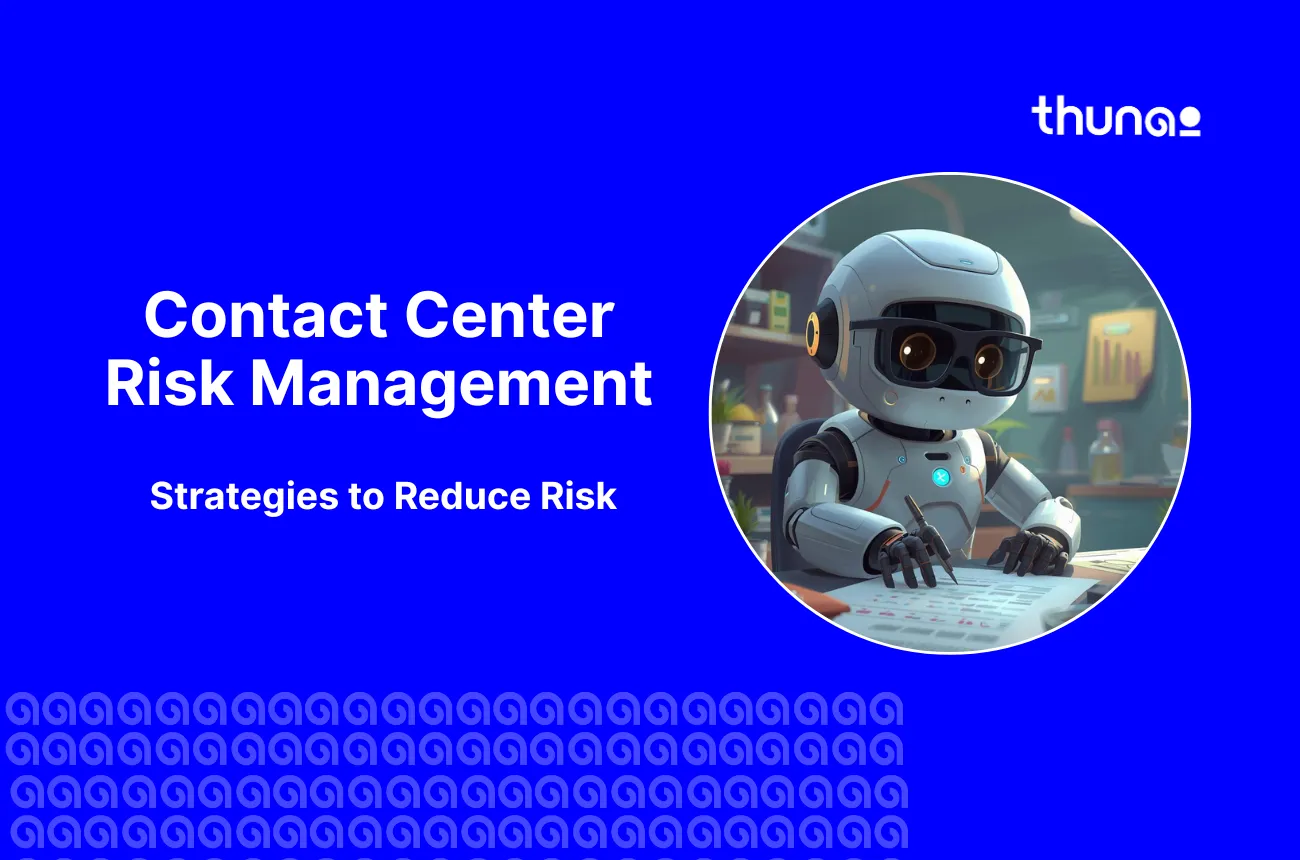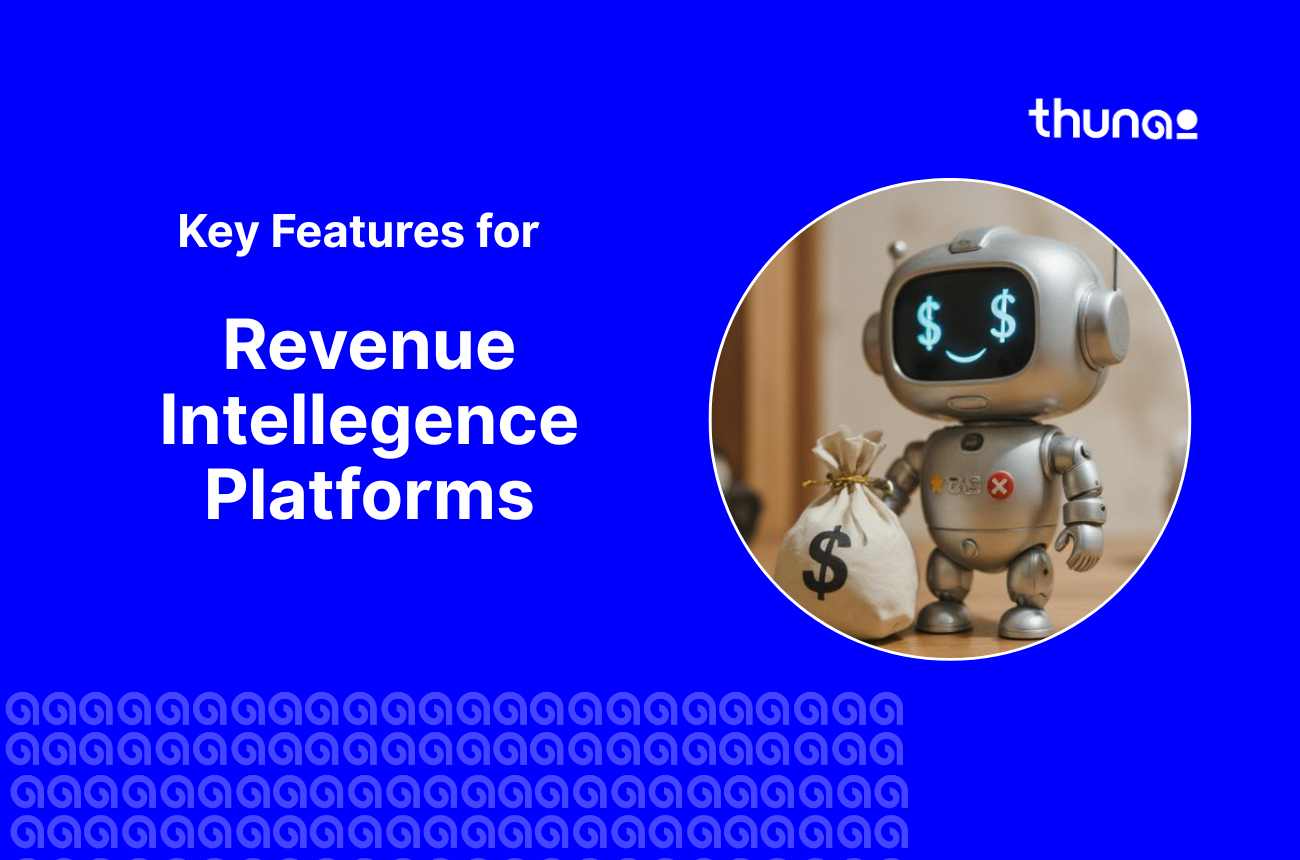AI-Powered Enterprise Search: The Complete Guide



Thunai learns, listens, communicates, and automates workflows for your revenue generation team - Sales, Marketing and Customer Success.
- Businesses waste significant time and money because their information is fragmented across many different systems, which makes old keyword-based search useless.
- Modern AI search understands the meaning and intent behind questions, not just keywords. It uses a company's own data to generate direct, summarized answers instead of just a list of documents.
- A good Enterprise search platform like Thunai connects you to all company data sources while strictly maintaining the original user security permissions, with practical uses across sales, support, and HR.
Do you waste hours each week switching between apps for basic information? The problem is not your data. The problem is how you access your data.
Knowledge fragmentation happens when important data is spread across many internal systems.
This leads to large financial losses and work delays!
However, AI-Powered Enterprise Search solves this. It turns your scattered data from a problem into a major company advantage.
What Is Enterprise AI Search and Why Does It Matter?
AI-powered enterprise search is a major change in how businesses find and use their internal information. It moves past old, limited search tools.
It is a smart and flexible way to interact with company data. Using this technology is more than just an IT update. It is a business necessity for success in a data-filled world.
From Keywords to Contextual Understanding
Traditional enterprise search was based on keyword matching. These old systems could only find documents that had the exact words you typed.
- This often led to many irrelevant results and user disappointment. AI-powered search is different. It uses artificial intelligence technologies like Natural Language Processing (NLP) and machine learning (ML).
- Enterprise AI search can search across all of a business’s different data sources. These include structured databases and unstructured content like emails.
- The objective is no longer to just find a document. The objective is to give direct, useful information to an employee while they work.
The Real Cost of Wasted Time
The need for AI search comes from the high business costs of poor information access. When valuable data is locked in separate systems, it creates work delays and repeated effort. This also results in a great deal of lost productivity.
- A McKinsey & Co. report says that employees spend an average of nine hours each week just looking for internal data. This waste of time has a direct effect on finances.
- An IDC study showed that a business with 1,000 information workers could waste over $5 million per year because of poor search tools.
- The problem is made bigger because the average business stores its information in over 2,000 different places.
- This makes most of the data hard for other parts of the business to access. This is more than a simple problem. It is a serious operational risk. It affects project schedules, product quality, and the ability to compete in the market.
How AI Improves Enterprise Search
The power of AI enterprise search comes from a mix of technologies. They work together to make the search experience more accurate and useful. The main improvement is a basic change from getting a list of documents to creating a direct answer.
The Main Technology: NLP, Machine Learning, and Semantic Understanding
At the center of modern search are technologies that let the system understand human language and learn.
- Natural Language Processing (NLP): This technology lets users ask questions in normal, everyday language. For example, a user can ask, What are the latest updates on our cybersecurity policy? NLP studies the question to understand its meaning. This makes the search function usable by everyone, not just people with special knowledge.
- Machine Learning (ML): ML algorithms let the search platform become smarter with use. The system learns from user actions, like which results are clicked and how long users view a page. It uses this information to improve its knowledge of what content is most helpful. This process means search results get more accurate over time.
- Semantic Search: This feature is a big step past simple keyword matching. It understands the purpose behind a search. It knows that I forgot my password and How can I reset my password? have the same objective, even with different words. It can also see conceptual connections. It can link a term like cloud migration to related topics like AWS or data security, even if those words were not in the original search.
The Generative Change with RAG
The addition of generative AI has changed the result of enterprise search. It now gives a direct, conversational answer instead of a list of links. This is made secure for business use by a technology called Retrieval-Augmented Generation (RAG).
- RAG bases the AI model's answers on your business's own private and correct data.
- When a user asks a question, the system first gets relevant facts from internal information sources. It then uses that specific information to create a trustworthy answer. This greatly lessens the chance of a made-up response.
- This allows the system to do the thinking for the user. It can read multiple documents and create a single, summarized answer.
- This changes how success is measured. The new measure is the much more helpful time-to-answer instead of time-to-document.
Key Features of AI-Based Enterprise Search Platforms
When reviewing AI enterprise search platforms, it is important to check the main features that give actual benefits. A modern platform has essential basic features, an intelligence layer, and a user-centered analytics part.
Enterprise Search Basic Features
These are the necessary supports for any good AI search solution.
- Complete Data Connectivity: An AI model is only as good as the data it can use. The platform must have a large number of ready-made connectors. These connectors should smoothly gather information from all business sources. These sources include CRMs, cloud storage, and collaboration tools. The quality of this connector library is a key difference between sellers.
- Individual Item Security: The system must closely follow the original security rules from the source systems. This means search results are filtered based on each user's permissions. An employee can only find information they are already allowed to see. This is very important for data privacy and following regulations.
- Scaling and Flexibility: The platform must be able to grow as the business's data and number of users increase. This growth should happen without a loss in performance. A good system also works with different technologies. This allows the company to connect its preferred large language models and other parts, avoiding being stuck with one seller.
The Intelligence and User Layer to Enterprise Search Platforms
This is where the platform shows its smart experience.
- Vector Search: A main part of modern search. It works by changing text into number-based codes called vectors. These vectors hold the text’s meaning. This lets the system find information based on ideas that are alike, not just keyword matches.
- Conversational Chat: Users can interact with the system through a normal language chat. This makes the platform seem more like a helpful assistant than a simple tool.
- Search Analytics Information: This gives an important information cycle for managers. The platform must give detailed data on user actions. This includes popular searches and, very importantly, searches that give no results. This data shows where information is missing and gives useful ideas to improve the system.
Thunai Use Cases - Using Thunai Brain, the Ultimate Enterprise Search Platform
AI enterprise search is not a tool for one department. Its advantages are seen across the whole business because it simplifies access to important information. It gives real results in sales, support, HR, and R&D.
- Customer Support: This is a fast, high-value use case. AI search gives support agents immediate access to product information and repair guides. Thunai helps them solve customer problems faster and more accurately. This improves first-contact success, shortens wait times, and improves customer happiness.
- Sales Support: Sales representatives can use AI search for a competitive advantage. They can quickly get relevant case studies and competitor information customized for a specific potential customer. This allows them to be better prepared for calls and close deals more quickly.
- HR and Onboarding: The technology greatly speeds up the onboarding process. New employees can find information on business policies and procedures on their own. HR managers can use Thunai to find the best people in large applicant databases.
- R&D and Engineering: In technical areas, AI search helps avoid the expensive issue of redoing old work. Engineers can easily find past project information and research. This lets them build on existing work and speed up new developments.
How Thunai Does More Than Enterprise Search With AI Agents and Automation
Thunai has come to the market with a distinct method. It presents its platform not as a search tool but as a system that changes a business's scattered data into a team of expert, automatic AI agents.
The main idea is the Thunai Brain. The Thunai Brain is a central, learning information center that takes in all types of business data. This includes documents, videos, and chat records. This Brain then acts as the one correct source that gives power to all of the platform's expert agents.
These agents are designed for specific business tasks:
- Voice Agents: These handle incoming and outgoing phone calls. Their conversational ability is very close to human. They can solve problems with real-time screen sharing and record interactions in a CRM.
- Email Agents: These automate the management of an email inbox. They draft personalized replies based on a complete understanding of the past conversation.
Want to see Thunai in action? Try it out free of cost!
FAQs for AI Enterprise Search
How does AI enterprise search handle data security and user permissions?
Modern platforms are designed with individual item security as a basic idea. They do not make a new set of permissions. Instead, they take and apply the original access rules from the systems they connect to. When a user does a search, the results are filtered by the system. They only show the documents and data that the specific user is already permitted to see in their original locations. This makes sure that sensitive information is not accidentally shown. It also helps the business follow its data rules.
What are the main risks of using generative AI in enterprise search, and how can they be lessened?
According to industry experts, the main risks are incorrect information, biases from the training data, and security issues with data. These risks are lessened with a method that has several parts:
- Use Retrieval-Augmented Generation (RAG): This technology bases the AI's answers on your business's specific, private data. This greatly lessens the chance of made-up information.
- Keep a Human in the Process: For important tasks, a human expert must check the AI's results before they are completed or sent out.
- Maintain Good Data Rules: You must actively clean your data to create a base of Accurate, Pertinent, and Trusted information. This means getting rid of Redundant, Obsolete, and Trivial content that can harm AI results.
- Set Up Strict Security Rules: You must create and follow a clear policy. This policy should stop employees from putting any sensitive business information into public AI tools. You must also make sure your enterprise search platform follows high security standards.
How do you check the return on investment of an enterprise search project?
Success and return on investment are checked using a combination of number-based and quality-based measures. Important measures include:
- Time Saved: Such as the time saved per search or less time spent on finding information.
- Lower Costs: From fewer customer support issues that need to be passed to higher levels or less repeated work.
- User Activity: Checking data like search success rates and use of the tool across the business.
- Business Results: The strongest measures are real business results. These include faster project schedules, quicker sales cycles, better customer happiness ratings, and direct increases in money earned. Case studies from large businesses show large returns. These include millions in yearly savings and hundreds of thousands of lawyer-hours saved.
To learn how a central AI brain can change your work, Try Thunai for free and use the full power of your business knowledge.






